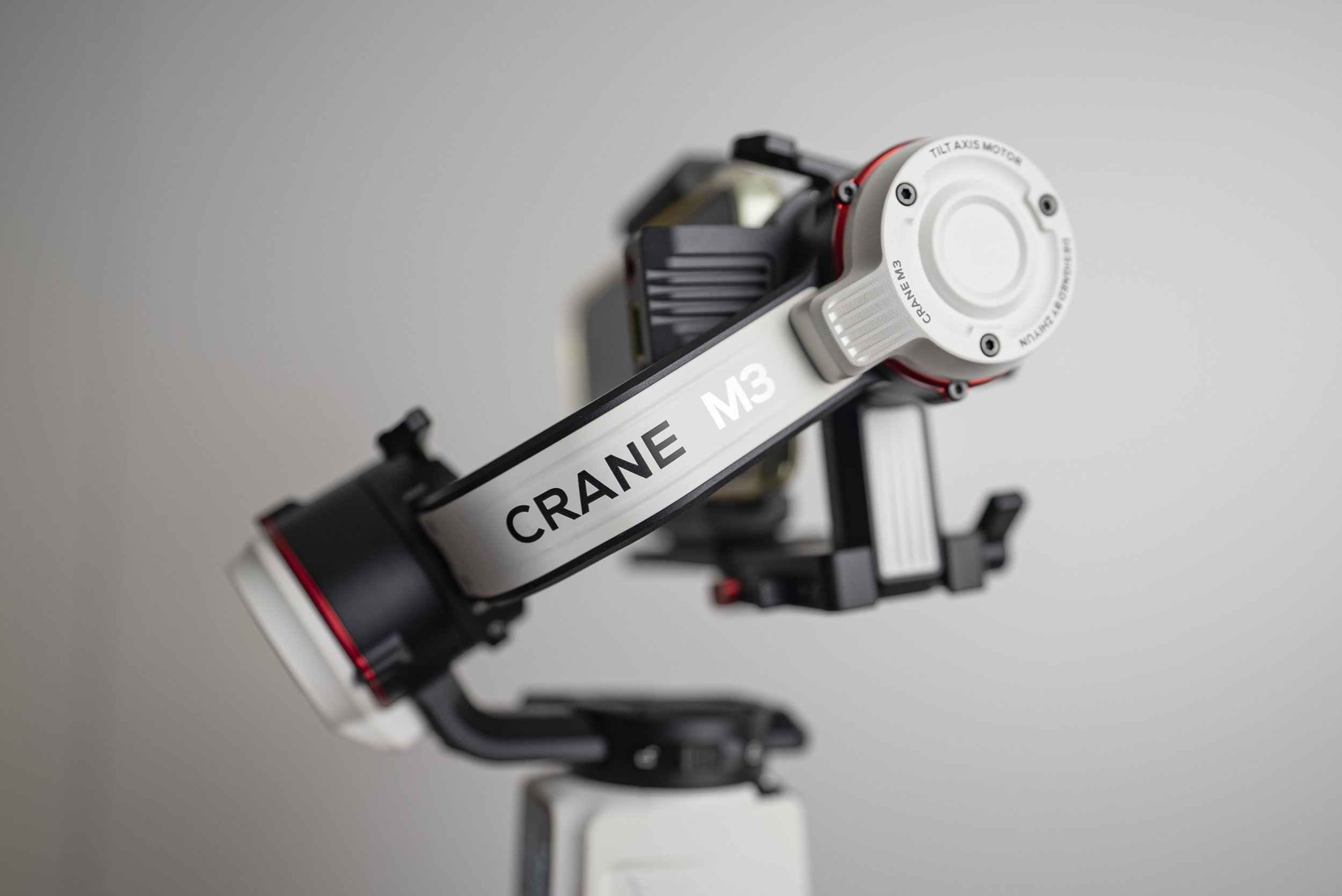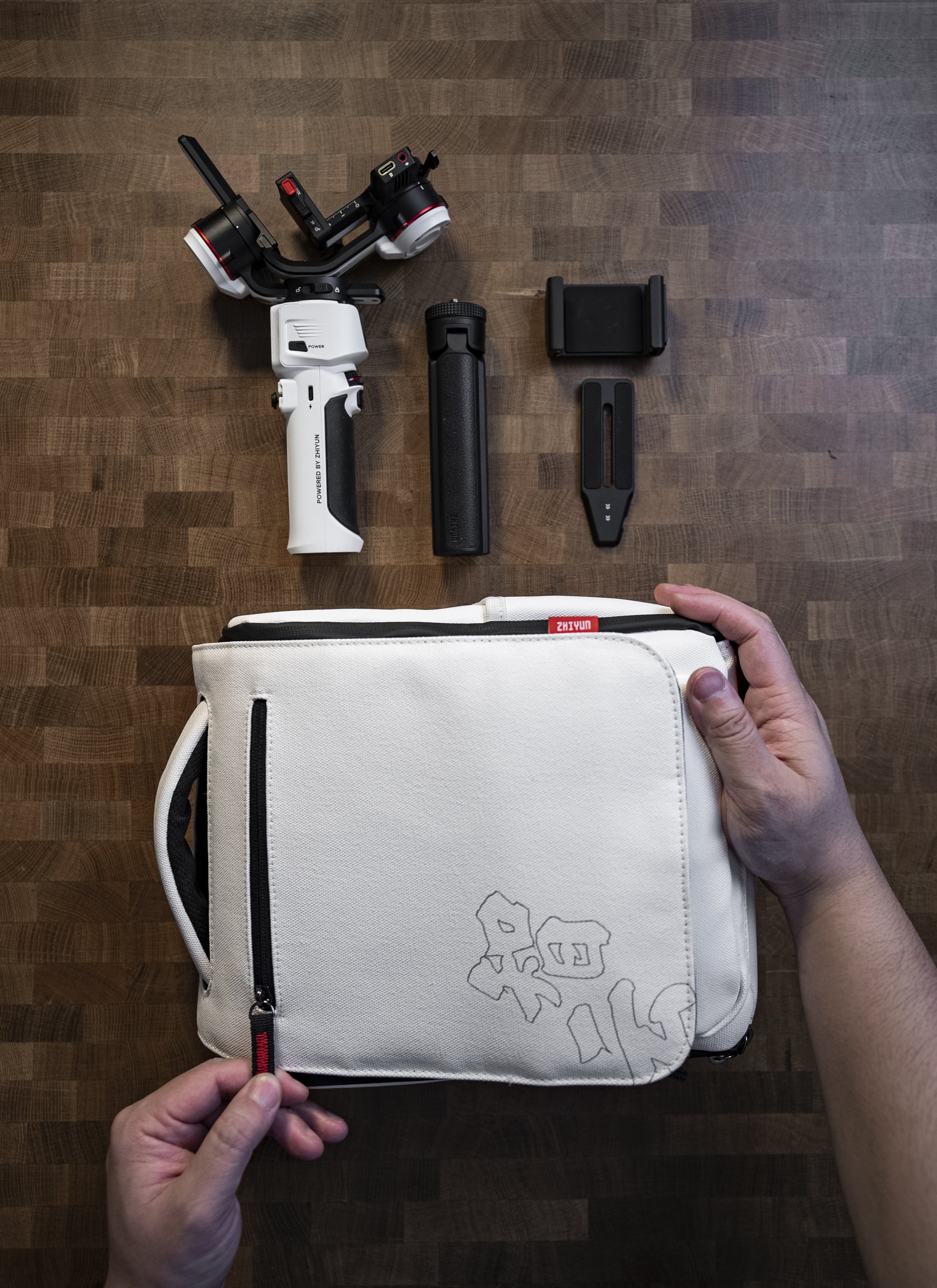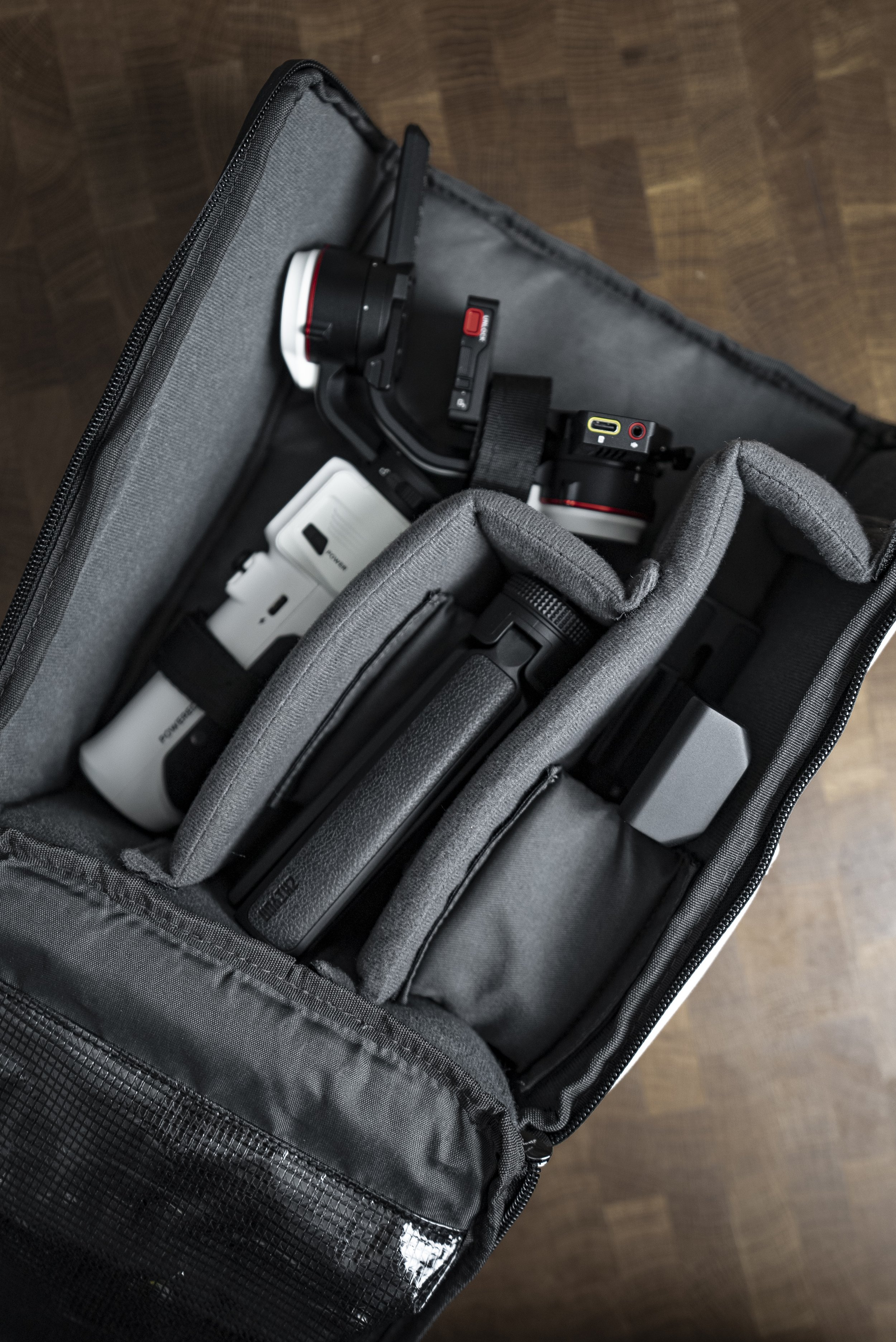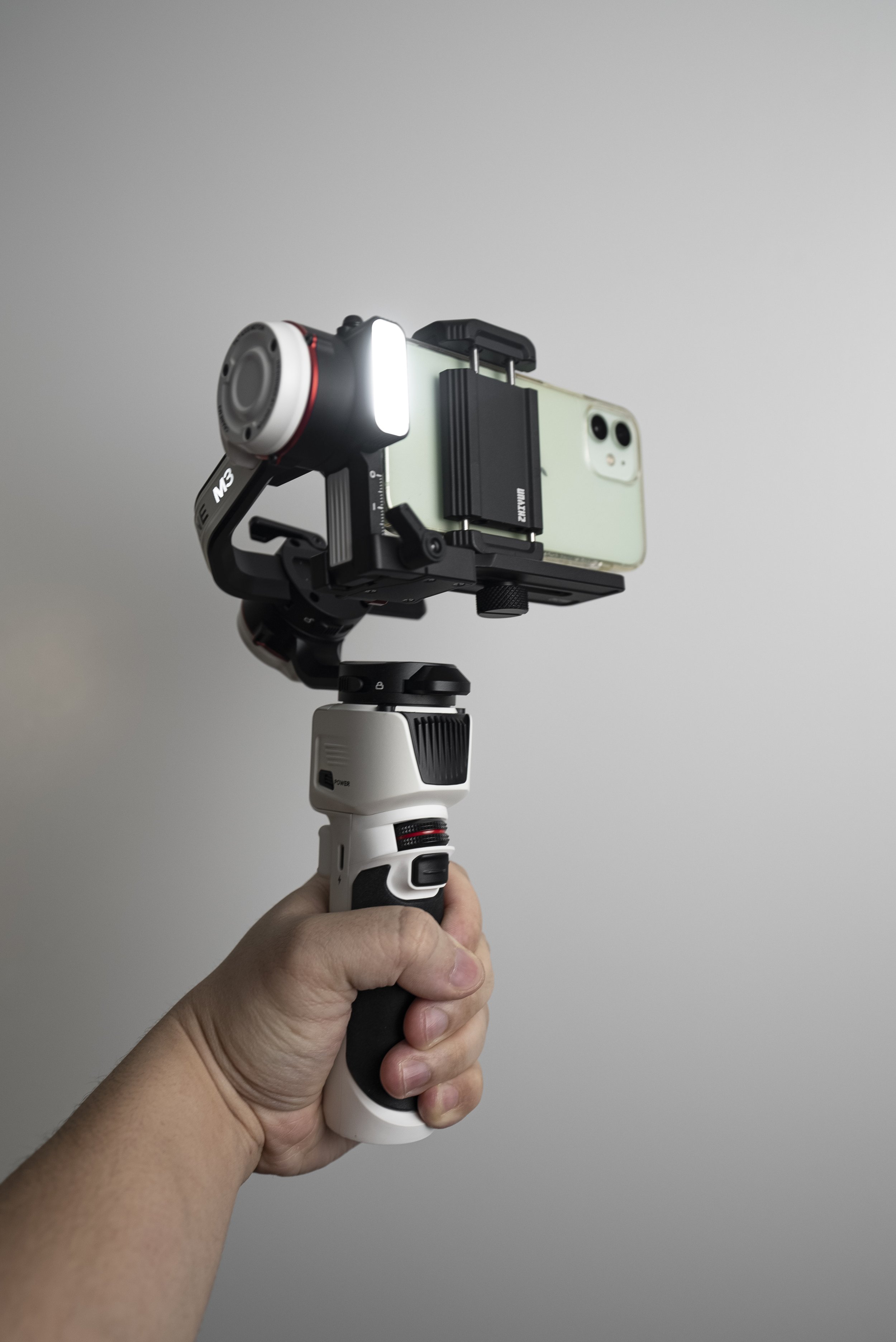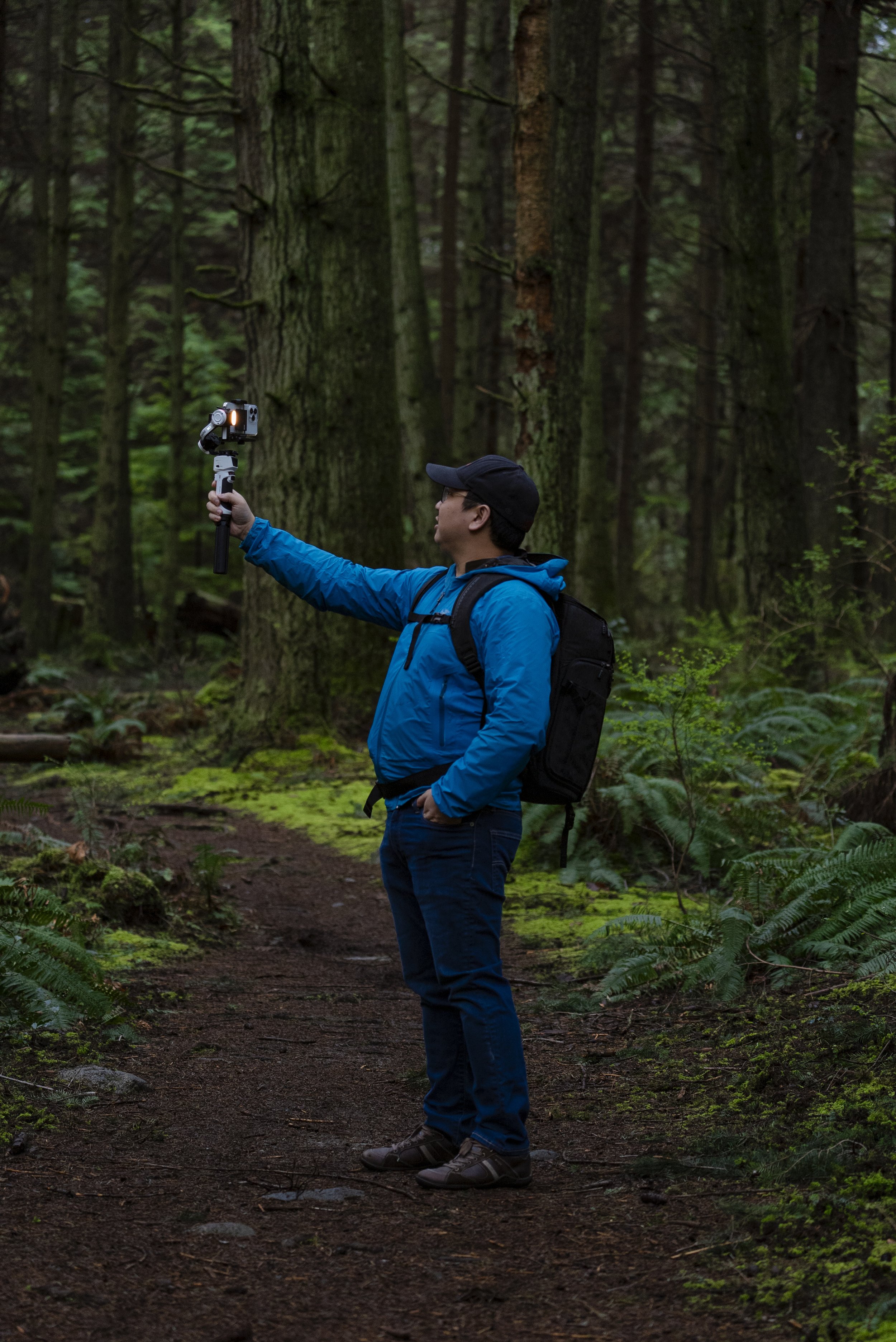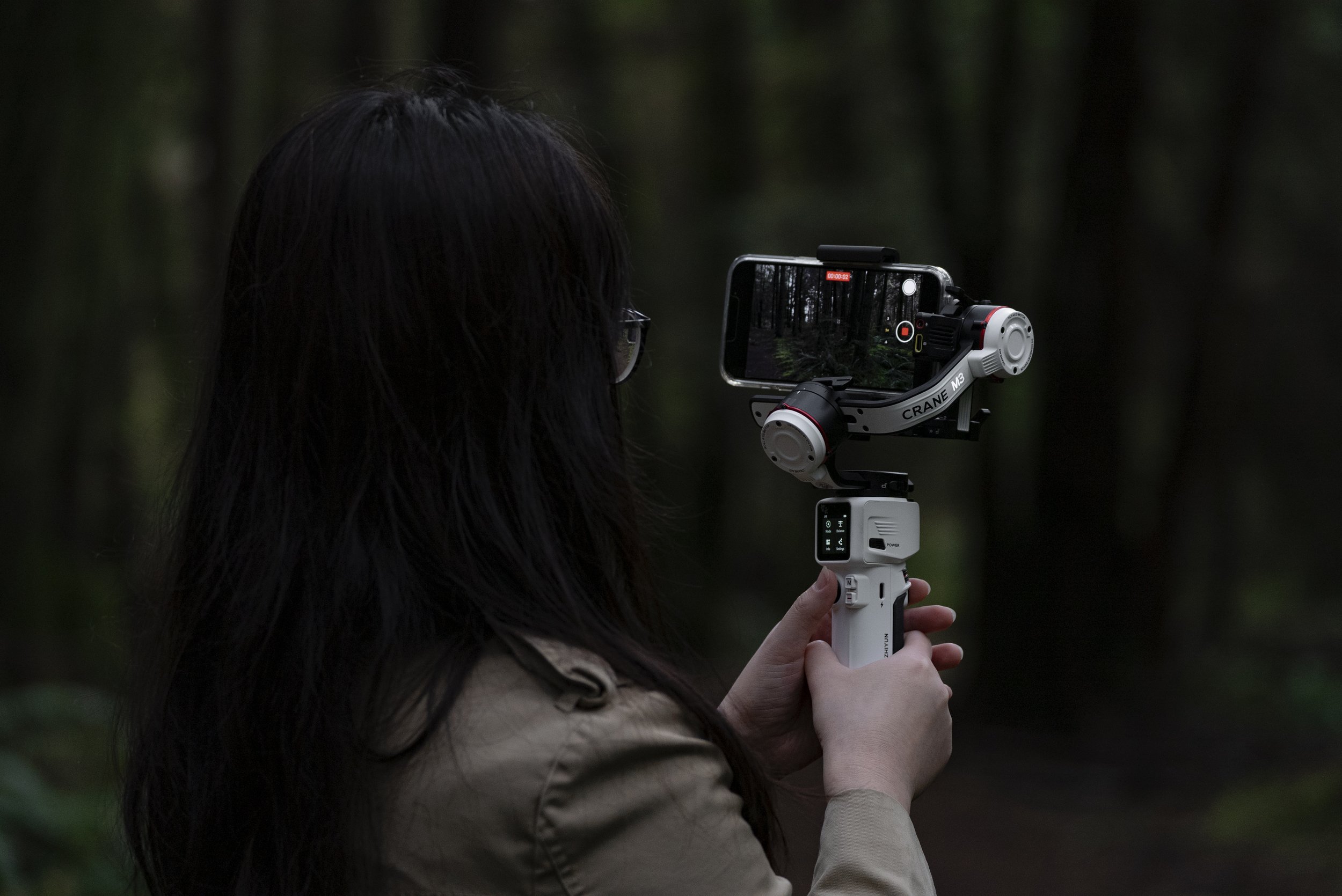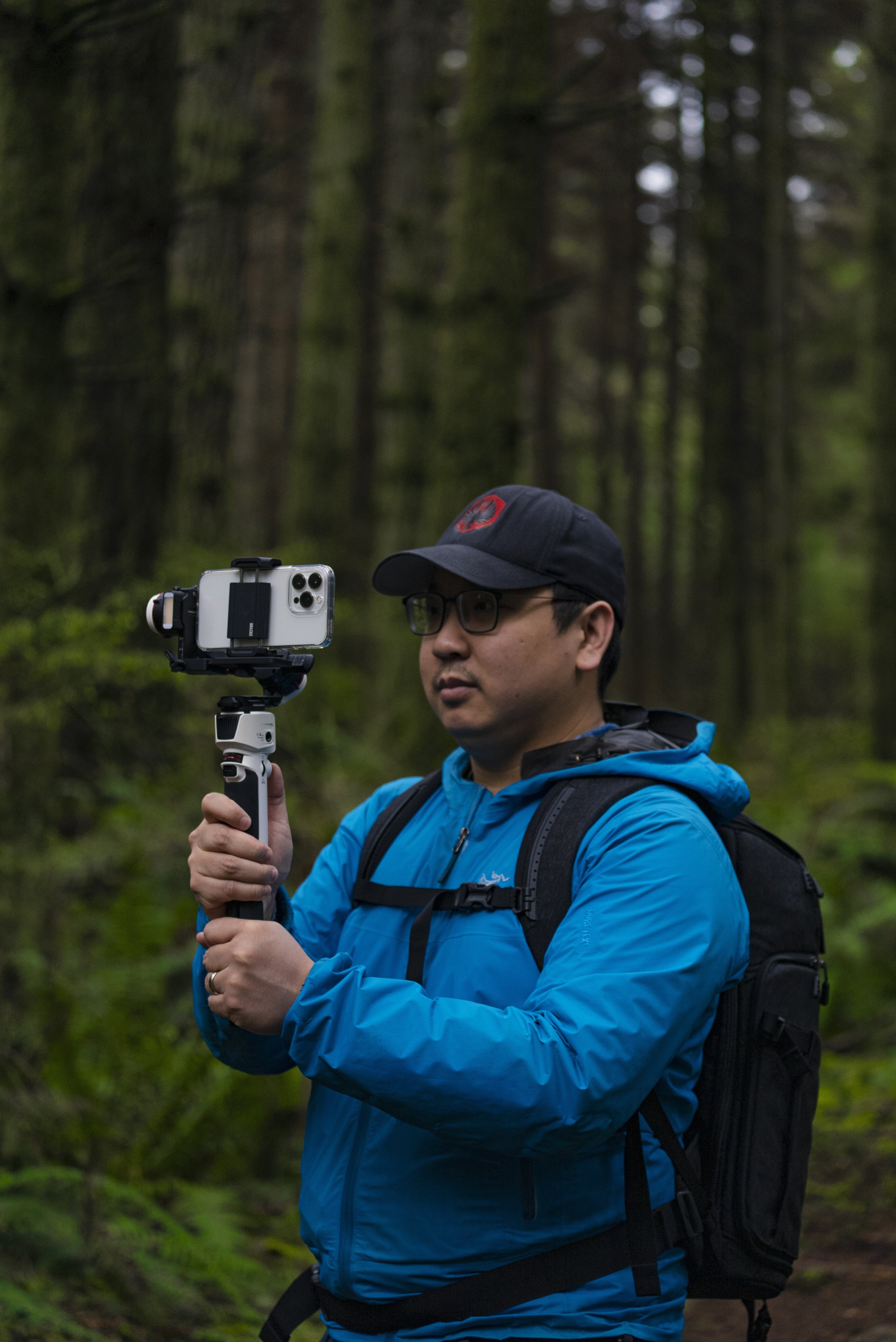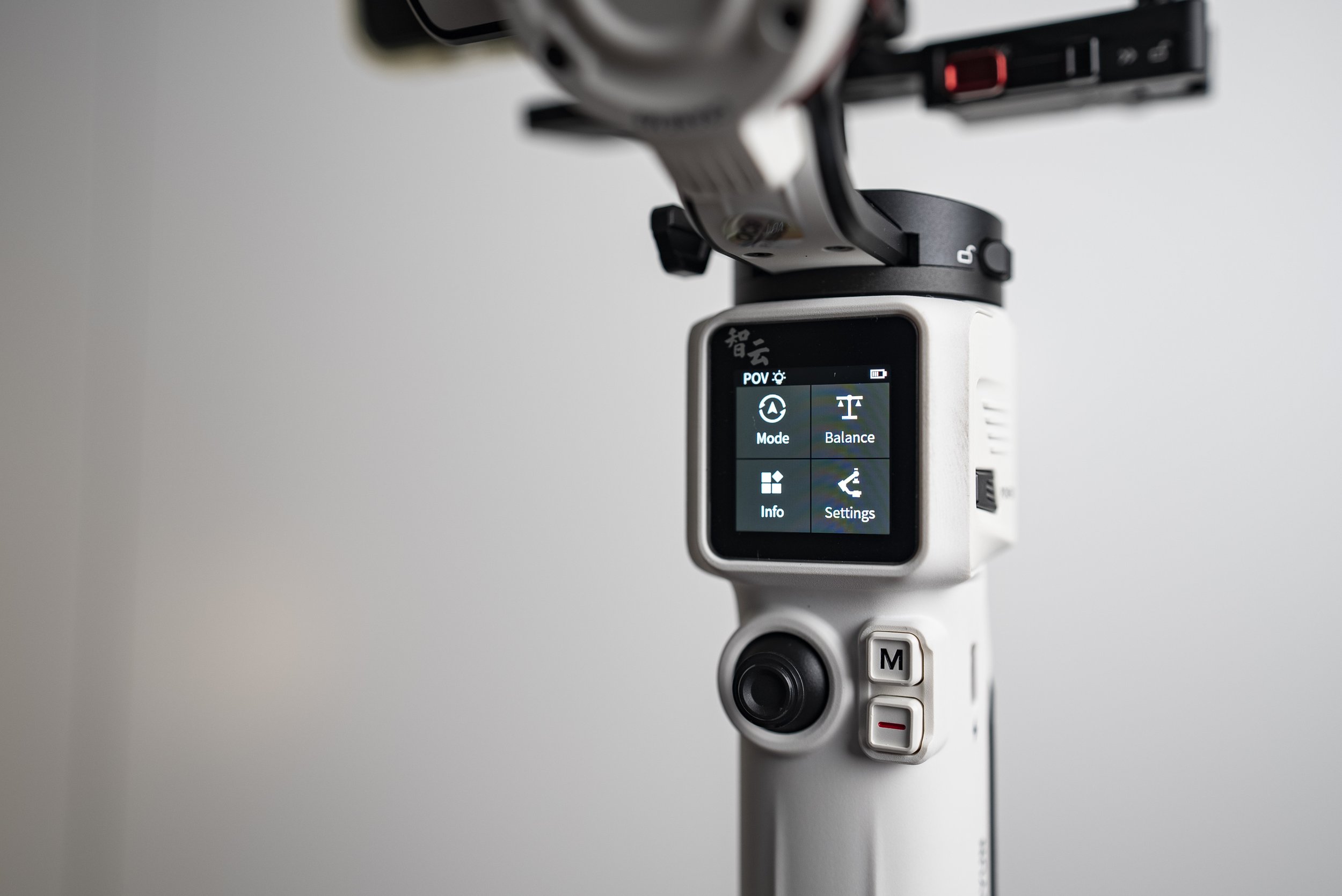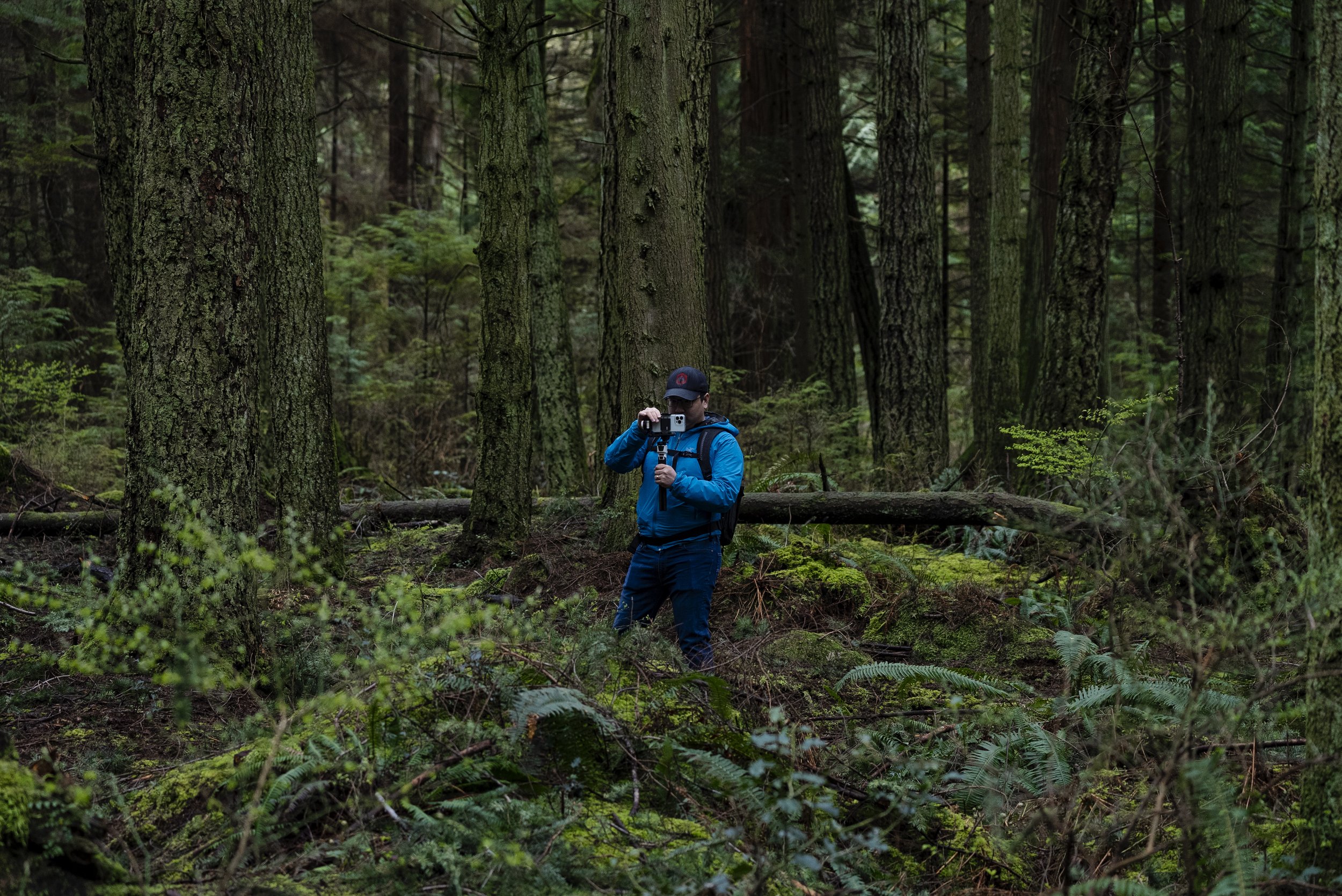Zhiyun Crane M3
This is the Zhiyun Crane M3. I’ve had this gimbal for about 2 months now and here to give you my opinion on how it performs in real life.
The standard kit comes with the Crane M3, Mini Tripod, Magnetic Fill Light Filters, EPP Carry Case, 3 type C cables for camera charging and Sony shutter release. The version you see here is the combo kit which comes with a backpack carrying case and phone mount. They also offer a pro kit which comes with a microphone, audio cables, and expansion base which will enable camera control for more brands.1.
The backpack is nice to have for st11oring the gimbal at home however in a real world scenario I’m more likely to throw the gimbal in my everyday backpack.
I will start by saying this is sexiest looking gimbal on the market. I love this white stormtrooper look. It’s so small and cute!
Disclosure: I was gifted Zhiyun’s Crane M3 Combo Kit for review and make a video showcasing how it performs. They do not get to see the review or content before it is posted and no money exchanged hands. There are affliate links are in the VALUE section of this review.
The Backpack:
If you’d like to use their backpack as your camera bag, the photo on the right will give you idea of how much room is left after the gimbal is packed in there. You could fit a small setup like the Sony RX100, ZV, or A6000 series camera with the lens detached. The exterior material is water resistance.
The gimbal:
The battery is built-in. In practice I got about 8 hours of runtime. In a professional environment, it can be concerning not to be able to swap out the battery but 8 hrs is more than enough for the type of work I do. It supports PD Fast Charge and can be charged with a power bank while operating at the same time so having a built-in battery isn’t a big deal in the opinion.
One of the unique features of this gimbal is that it has a built-in dual color temperature light which comes in clutch when you need a little bit of fill light. It comes with 4 magnetic fill light filters to tint the light source. It produces 800 lumens and has a color temperature range of 2600K to 5600K.
Despite being a tiny gimbal, the motors are mighty. It can handle a A7S3 + 24GM. The gimbal can be connected to their app and be controlled by your phone. It can even be connected to a Sony camera to use the handle buttons to control the camera.
The 1.22” touch screen is intuitive to operate. I didn’t need to pull out a manual to figure it out. The brightness is good enough for making the screen visible even outdoors and there is little lag when interacting with the interface. The quick release system is different from my Weebill-S and it is quicker to release camera making balancing, assembly and disassembly easy.
usability:
For 2 months I’ve used this gimbal on multiple shoots. The Weebill S is my main gimbal that I used for the past year so I’ll be comparing my experience with that. A lot of folks mention the M3 is capable of handling full frame setups like the A7S3 + 24mm 1.4 GM. While this is true, I do not recommend it because the articulation arms are short due to the compact design. The cradle is small causing the EVF or other parts of the camera body to knock against the gimbal which restrict what type of gimbal moves you can perform like flipping it upside down to get those low angle shots.
Potentially the A7C could work if you really want to use a full frame setup because it doesn’t have an EVF but I would recommend this for even smaller setups like a phone, action cam, Sony RX100 or ZV-1.
If you’re mainly operating at eye to chest level the M3 works fine. However when it comes to transiting the gimbal from low to the ground to eye level it requires you to squat and walk while the Weebill S you can hold it like a briefcase and walk normally. The form factor and size makes it tricky to get a smooth low to high angle transitions. Those type of moves will also cause more strain on your back and thigh. If you’re doing a lot of shots that are low to the ground I would recommend the Weebill form factor.
value:
If you’re considering the Crane M3, I think the M2S and Weebill S could be on your shopping list too.
$349.00 - Crane M2S Standard Kit
$395.00 - Weebill S Standard Kit (Currently on sale from $489.00)
$449.00 - Crane M3 Standard Kit
overall impression of the Zhiyun Crane M3:
The Zhiyun Crane M3 is on the pricier side but at the time of release it was smaller and lighter than any gimbal that could handle the payload of a full frame setup until the M2S came out recently. If you have a compact camera setup, travel often and can benefit saving every inch and gram in your luggage the Crane M3 or Crane M2S might be the gimbal for you.
For those who are more professional, this is probably not for you. I would recommend grabbing their Weebill S while it’s on sale because it can handle higher payloads like the A7S3 + 16-35GM or 24-70GM plus it has a larger cradle so you have a greater range of motion and go into under slung mode. If you get the M3 to do professional work you may find yourself outgrowing it quickly and needing to upgrade as your gear gets heavier and larger. If you’re new to the industry, I think the Weebill S is a great starting gimbal because it can handle carrying the A7S3 + 16-35GM, or 24-70GM.
However if your mind is set on the Crane M3, you may wonder if you should save $110 for the all new M2S. There is a list of reasons why I think the M3 is worth the extra price tag although I think many customers will opt for the newer and cheaper option.
Hopefully, I can get the Crane M2S in for review to give a comparison review in the future!
